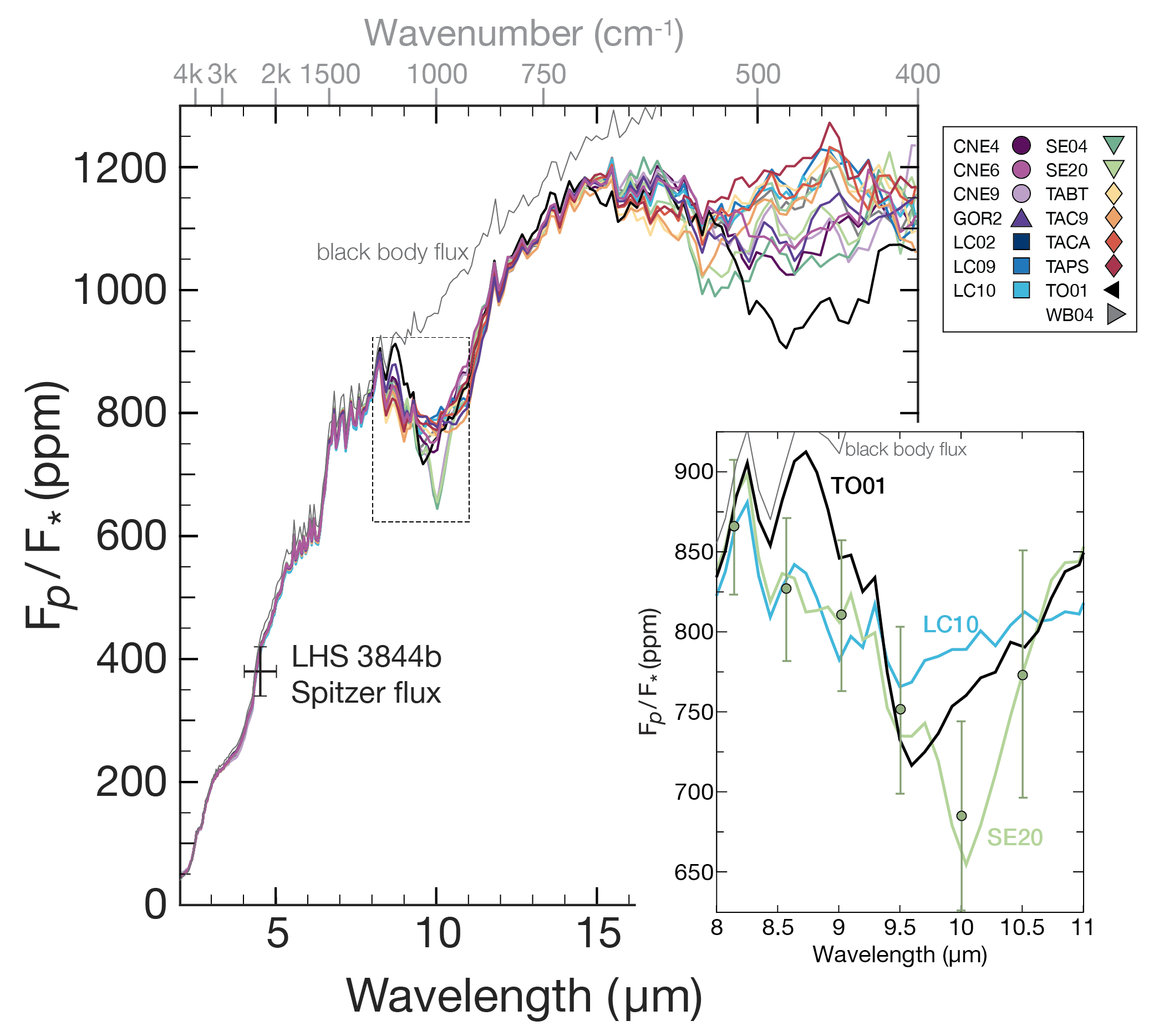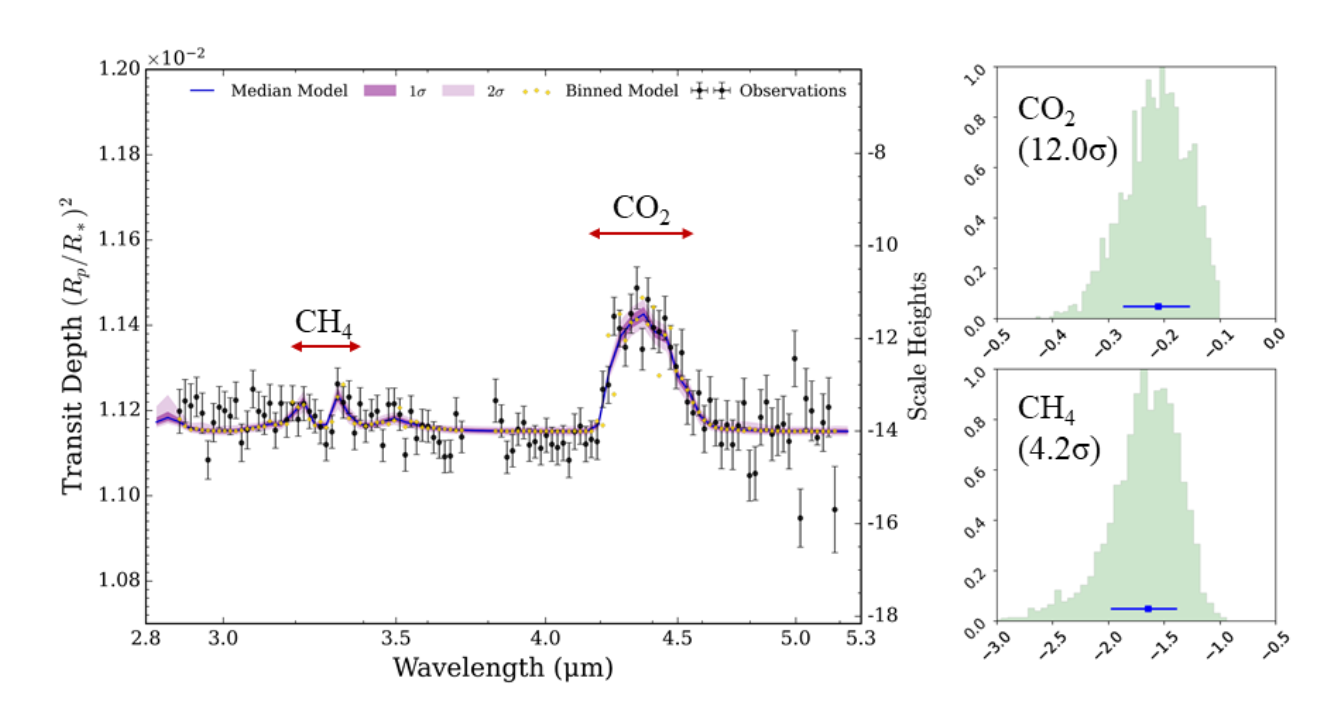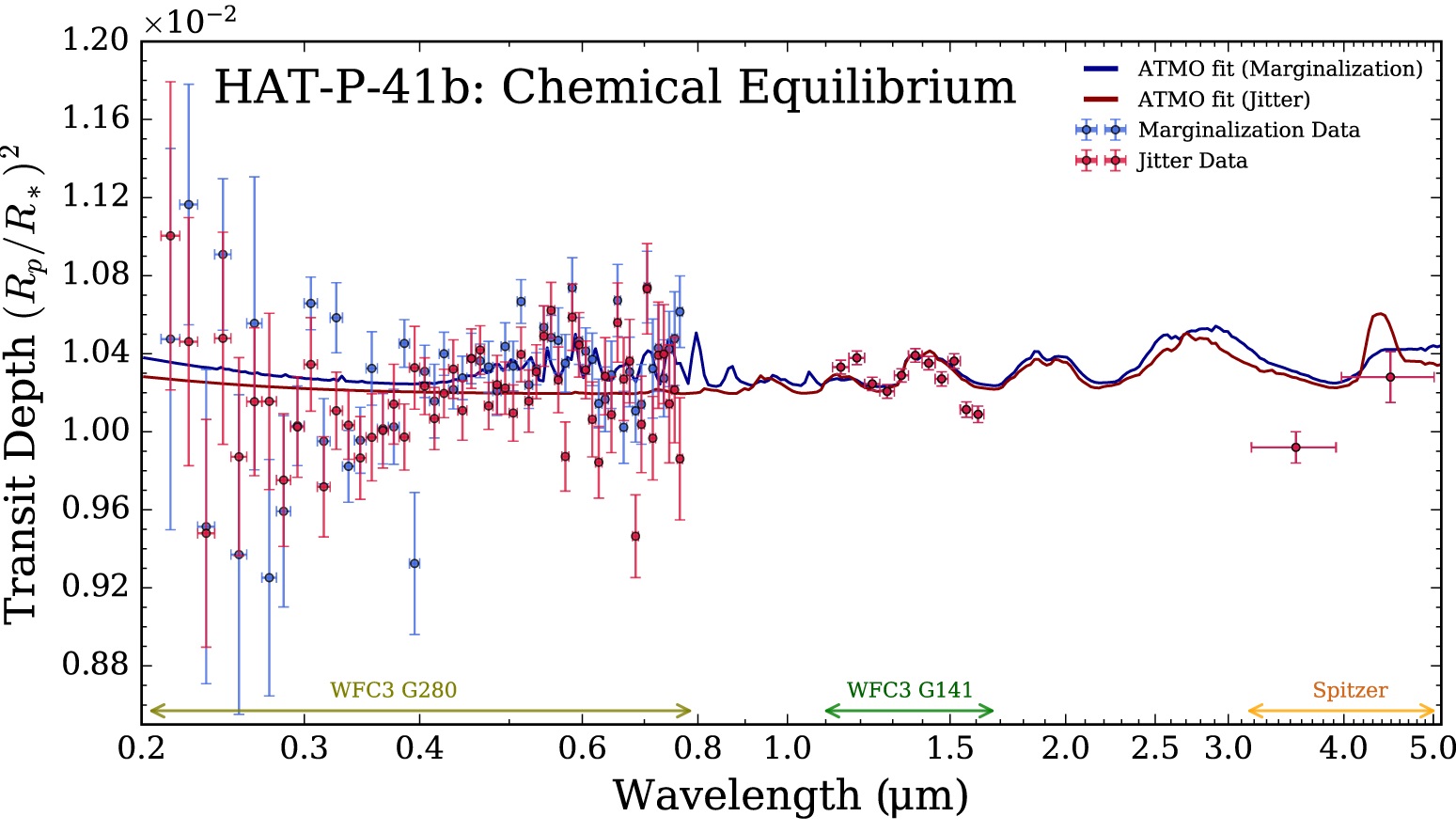Constraining the chemical and physical properties of rocky exoplanet surfaces

Rocky exoplanet surfaces have the most potential to record geological variation at mid-infrared (MIR) wavelengths.With JWST in operation, it is critical to link probable planetary surface diversity to anticipated observational data. In a project led by Dr. Emily First, we examined the chemical and mineralogical variability distinguishable in spectra of a common surface rock type, basalt. Dr. First measured MIR emissivities of 15 basaltic samples, which I utilized to produce spectra relevant to JWST observations of planetary surface emission. Several features standout among the broadly similar spectra. A deep flux minimum at 10 µm occurs in samples with >15 wt.% amphibole, a potentially hydrous mineral. A highly serpentinized rock displays a longer-wavelength Christiansen feature (8.8 µm) and lower 20-24 µm emissivity than other samples.Alteration of primary basalt to serpentine requires liquid water, and thus, serpentine signals from exoplanet surfaces would imply the presence of water. We find that plagioclase and serpentine content, and bulk composition (e.g., wt.% MgO, Al2O3) correlate with simulated flux from MIRI photometric bandpasses. Under plausible observing scenarios of planetary surface emission with JWST's MIRI spectroscopic and photometric time-series modes, some defining features of fresh and altered basalts are distinguishable.
Publication(s): First, E., Mishra, I., + 4 co-authors, Mid-infrared spectra for basaltic rocky exoplanets, 2023, in review at Nature Astronomy
Probing the the Aerosol-Laden Atmosphere of GJ1214b with JWST

GJ1214b belongs to the elusive class of super-Earths/sub-Neptunes, whose transmission spectra obtained via Hubble and ground-base observatories is famously flat, i.e., devoid of molecular features. This is thought to be due to high altitude aerosol layers, which have so far prevented us from probing its atmospheric composition. The James Webb Space Telescope (JWST) will have access to longer wavelengths where these aerosol layers become transparent and features of prominent species such as CO2 and CH4 are expected to be seen. As a co-leader of the project, along with my REU mentee Joshua White, I led a thorough assessment of the ability of the NIRSpec instrument on JWST, particularly its G395H mode, to access these features and provide us constraints on the abundances of the two prominent carbon species.
Selected Presentation(s): AAS 2021 January Meeting Poster (presented by Joshua White)
Unveiling the atmosphere of Hot Jupiter HAT-P-41b

The Hot Jupiter HAT-P-41b is one of the first exoplanets with observations spanning the ultraviolet (UV) to near-infrared (NIR) wavelengths, thanks to the newly implemented Wide Field Camera-3 (WFC3) UVIS G280 grism on Hubble. I was part of a consortium of exoplanets scientists who studied HAT-P-41b spectra (0.2-5.0 microns) in great detail, and we found that the presence of significant H- opacity provides the most robust explanation for the flat spectrum in the UV and visible regions. I specifically led the comparison of the data with a grid of forward models, spanning a broad range of atmospheric compositions, temperature, and aerosol properties, under the assumption of equilibrium chemistry. We found that this grid analysis indicated that clouds could play a key role in shaping HAT-P-41b's spectrum in the UV and visible regions, but were not able to provide reasonable fits to the NIR data points.
Publication(s): Lewis, N. K., & 21 co-authors including Mishra, I., Into the UV: The Atmosphere of the Hot Jupiter HAT-P-41b Revealed, 2020, The Astrophysical Journal Letters, 902, L19 (also available on arXiv)



